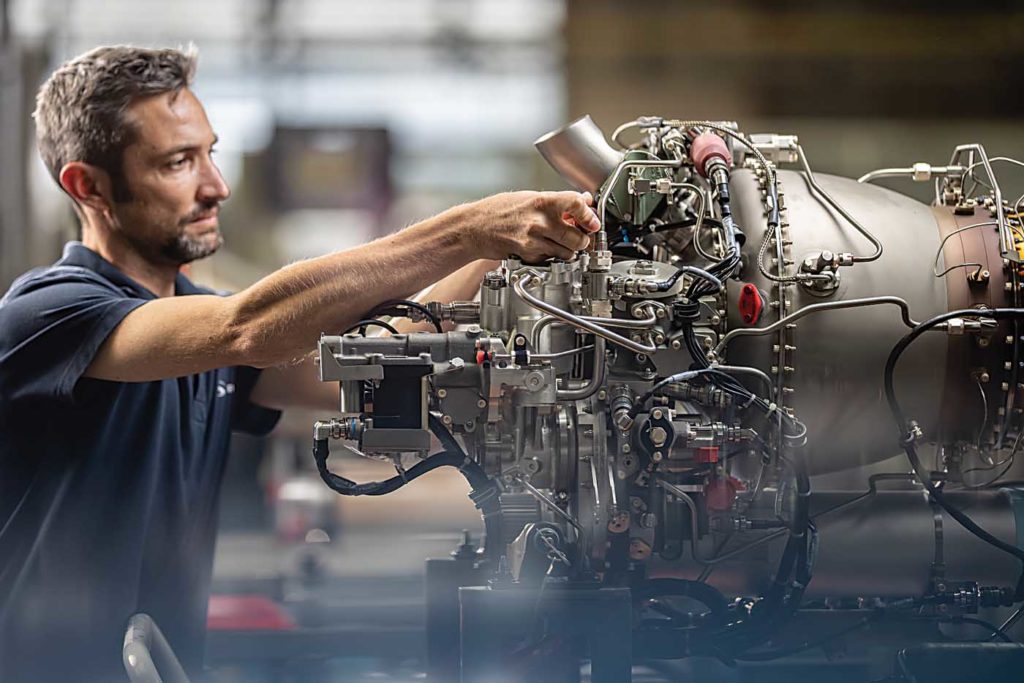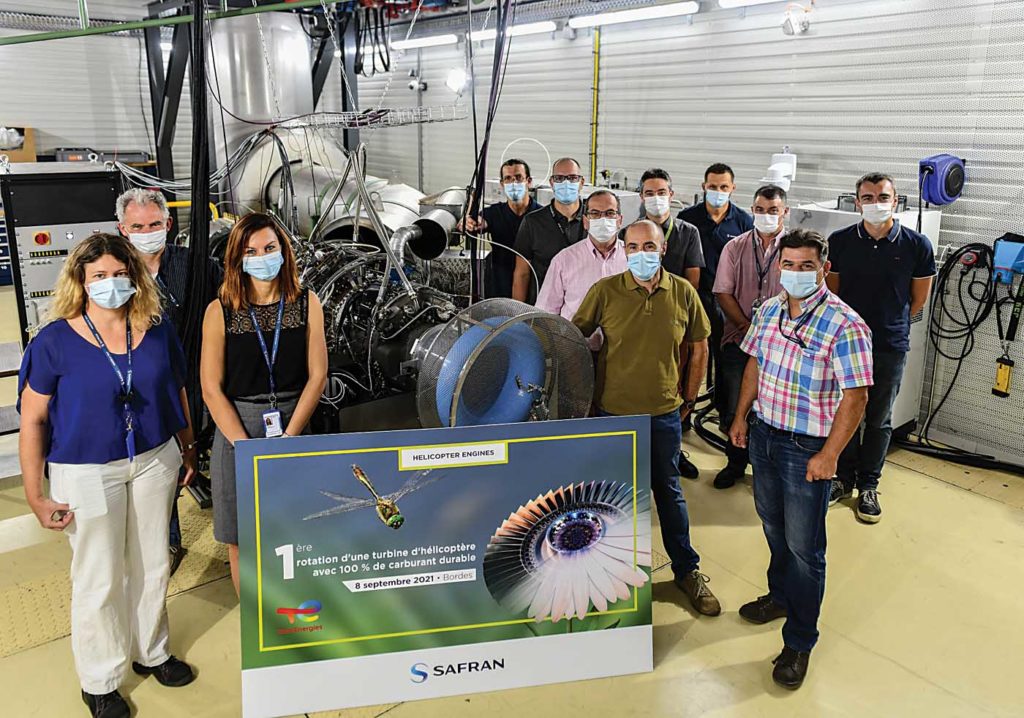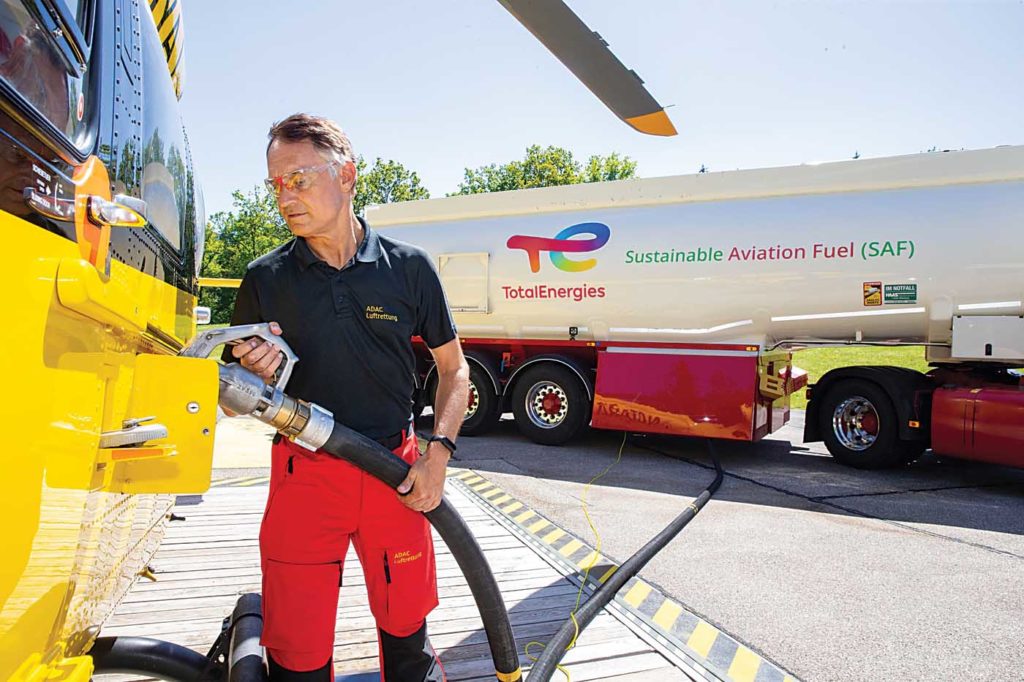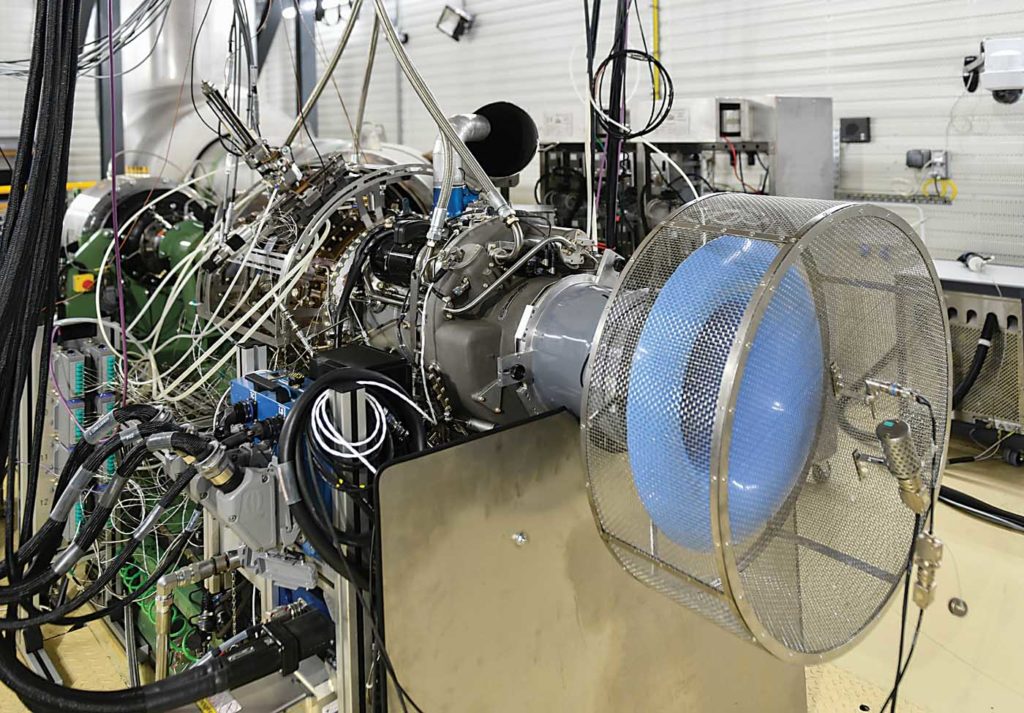To meet the aerospace industry’s objectives to reduce its CO2 emissions, Safran Helicopter Engines believes it must find alternatives to fossil jet fuels. The most technologically accessible solution is to introduce sustainable aviation fuels (SAF) such as “drop-in” biofuels with a favorable carbon balance, to gradually replace fossil fuels. In this field, the engine manufacturer has clearly taken the lead.

Last June in Munich, in cooperation with ADAC Luftrettung, Airbus and TotalEnergies, Safran flew a rescue H145 on biofuels for the first time. During this flight, the twin Arriel 2E operated on a mixture of 40 percent biofuel and conventional Jet-A1. This flight marked a helicopter industry first.
The biofuel was produced by TotalEnergies from used cooking oil at its refinery in Normandy, France.
It is a second-generation biofuel, the SAF of choice of the aviation industry because it is produced from waste materials such as used vegetable oils and fats, usually from the food industry. This type of biofuel has no negative impact on agricultural food production. SAF makes a real difference. On this flight, its use reduced CO2 emissions by more than a third. The major benefit is that industry can reduce CO2 emissions today on helicopters that are already in service.

Safran engines are already certified to run on 50 percent SAF. The manufacturer’s ambition is to obtain a 100 percent biofuel approval within the decade. Emitting much less carbon throughout their entire life cycle, these fuels could help reduce aviation CO2 emissions by up to 80 percent.
To achieve this objective, another industry first was achieved in September with the first helicopter engine — a Makila 2 — to be tested on 100 percent SAF. The test campaign has evaluated the operational impact of using 100 percent SAF in a helicopter turbine, specifically on its fuel and lubrication system, combustion chamber and emissions. The next step is the realization of future test flights with our helicopter partners using 100 percent biofuel. It will happen by the end of the year.
In parallel, Safran Helicopter Engines is also deploying SAF in engine test cells at all its plants, and by the end of 2021, the manufacturer plans to use at least 10 percent SAF at all its French facilities. Franck Saudo, CEO of Safran Helicopter Engines, said: “The use of sustainable fuels among helicopter operators and at our sites is a promising lever to significantly reduce CO2 emissions over the entire life cycle of our products. Reducing CO2 emissions is a collective responsibility. The women and men of Safran are fully mobilized.”

The development of sustainable aviation fuels also requires the development of supply chains. Together with partners in the Nouvelle-Aquitaine region (notably TotalEnergies and Euralis), the manufacturer has initiated the Biokéna project, which aims to create a sustainable aviation fuel ecosystem in France’s leading agricultural region in the southwest.
Safran also believes that the future of helicopter propulsion lies in the efficient combination of thermal and electrical power sources. Developed with technologies from Safran sister companies, a demonstrator has already validated an “eco mode” concept during ground tests. It will soon be flight tested on the Airbus Helicopters Racer. The technology allows a pilot to “pause” one engine while in the cruise, leaving the remaining engine to supply full power. It generates fuel savings of around 15 percent and increased mission range. Whenever required (during acceleration, landing or loss of power, for example), an innovative electric motor rapidly and automatically restores the resting engine to full power.

Another hybridization innovation, this time aimed at single-engine helicopters, supplies electrical power assistance in case of in-flight shut-down of the turbine. Several minutes’ worth of pure electrical flight will help the pilot to land safely. Furthermore, the electrical power source combined with the turbine can reduce pollutant emissions during take-off (and offer additional operational safety margins).
A third step is a Hybrid-Electric Propulsion System (HEPS) for new vertical take-off and landing (VTOL) and short take-off and landing (STOL) applications. This distributes electrical power to multiple rotors/propellers as needed. Subsystems include a power supply based on a turbogenerator and batteries, and a hybrid power management system that distributes power to electric motors for lift and/or propulsion.

In 2018, in partnership with other Safran companies, Safran Helicopter Engines conducted the first ground tests of a HEPS capable of delivering 100 kW of electrical power. This demonstrated the technical feasibility of this propulsion concept.

HEPS flight tests will take place in 2022 on EcoPulse, a demonstrator developed in partnership with Airbus and Daher under French Civil Aviation Authority (DGAC) funding. Tests will continue with the development of more powerful turbogenerators. This catalog of solutions will be available to manufacturers of new helicopters, VTOL and airplane concepts.








